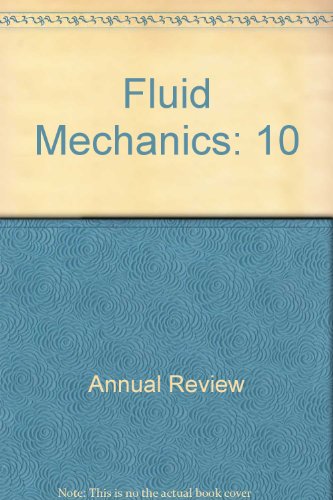湍流中重粒子动力学的统计模型
IF 30.2
1区 工程技术
Q1 MECHANICS
引用次数: 3
摘要
当非常小的颗粒悬浮在运动中的流体中时,它们往往会跟随流动。统计模型已经成功地描述了这种示踪剂颗粒是如何通过湍流混合、传输和分散的。质量密度大于携带流体质量密度的重颗粒可以从流中分离出来。这导致了优先采样、小规模分形聚类和大碰撞速度。为了描述粒子惯性的这些影响,必须考虑粒子在相空间中的位置和速度。近年来,统计相空间模型对我们理解湍流中的惯性粒子动力学做出了重大贡献。这些模型有助于确定控制粒子动力学的关键机制和无量纲参数,并进行了定性预测,在某些情况下,还进行了定量预测。本文综述了湍流中小而重的球形粒子动力学的统计相空间模型。我们通过将他们的预测与数值模拟和实验室实验的结果进行比较来评估他们的有效性,并总结他们的成功和失败。《流体力学年度评论》第56卷预计最终在线出版日期为2024年1月。请参阅http://www.annualreviews.org/page/journal/pubdates用于修订估算。本文章由计算机程序翻译,如有差异,请以英文原文为准。
Statistical Models for the Dynamics of Heavy Particles in Turbulence
When very small particles are suspended in a fluid in motion, they tend to follow the flow. How such tracer particles are mixed, transported, and dispersed by turbulent flow has been successfully described by statistical models. Heavy particles, with mass densities larger than that of the carrying fluid, can detach from the flow. This results in preferential sampling, small-scale fractal clustering, and large collision velocities. To describe these effects of particle inertia, one must consider both particle positions and velocities in phase space. In recent years, statistical phase-space models have significantly contributed to our understanding of inertial-particle dynamics in turbulence. These models help to identify the key mechanisms and nondimensional parameters governing the particle dynamics and have made qualitative and, in some cases, quantitative predictions. This article reviews statistical phase-space models for the dynamics of small, yet heavy, spherical particles in turbulence. We evaluate their effectiveness by comparing their predictions with results from numerical simulations and laboratory experiments, and we summarize their successes and failures. Expected final online publication date for the Annual Review of Fluid Mechanics, Volume 56 is January 2024. Please see http://www.annualreviews.org/page/journal/pubdates for revised estimates.
求助全文
通过发布文献求助,成功后即可免费获取论文全文。
去求助
来源期刊
CiteScore
54.00
自引率
0.40%
发文量
43
期刊介绍:
The Annual Review of Fluid Mechanics is a longstanding publication dating back to 1969 that explores noteworthy advancements in the field of fluid mechanics. Its comprehensive coverage includes various topics such as the historical and foundational aspects of fluid mechanics, non-newtonian fluids and rheology, both incompressible and compressible fluids, plasma flow, flow stability, multi-phase flows, heat and species transport, fluid flow control, combustion, turbulence, shock waves, and explosions.
Recently, an important development has occurred for this journal. It has transitioned from a gated access model to an open access platform through Annual Reviews' innovative Subscribe to Open program. Consequently, all articles published in the current volume are now freely accessible to the public under a Creative Commons Attribution (CC BY) license.
This new approach not only ensures broader dissemination of research in fluid mechanics but also fosters a more inclusive and collaborative scientific community.

 求助内容:
求助内容: 应助结果提醒方式:
应助结果提醒方式:


